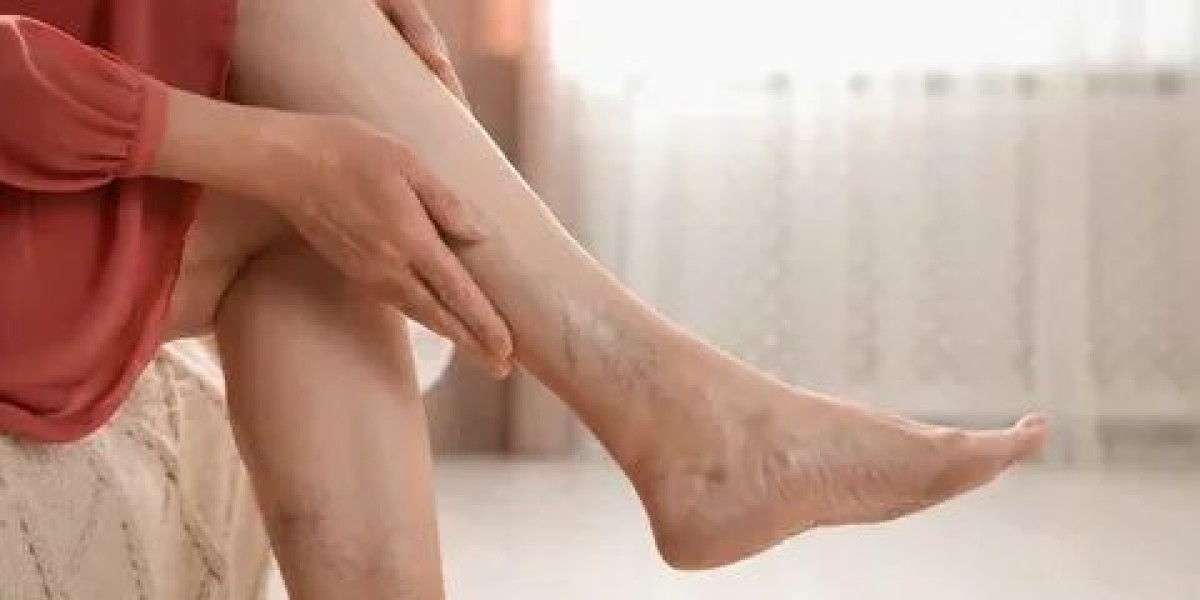Varicose veins are more than just a visible vein concern—they can raise questions about circulation, discomfort, and long-term health risks. Many people wonder whether these enlarged, twisted veins could increase the chances of developing blood clots, and whether seeking Varicose Veins Treatment plays a role in preventing complications. Since these veins involve improper blood flow, it’s natural to question how deeply they impact vascular health and whether they can lead to something more serious.
What Makes Varicose Veins Concern-Worthy?
When discussing varicose veins, it’s important to understand the internal issue causing them. At their core, varicose veins form when valves inside the veins weaken, allowing blood to pool and veins to stretch. This buildup of stagnant blood is the reason many people seek Varicose Veins Treatment, especially when symptoms progress. Over time, pressure inside the veins intensifies, which may increase discomfort, swelling, heaviness, and in some cases, the risk of clot formation. Though not every varicose vein leads to a clot, the connection between sluggish circulation and clot risks is medically recognized, making awareness essential.
How Varicose Veins Affect Blood Flow
Poor circulation is one of the main concerns associated with varicose veins. When blood cannot properly return upward toward the heart, it becomes trapped in the lower limbs. The legs, being farther from the heart and affected by gravity, are already prone to circulatory challenges. Stagnant blood becomes a factor that can contribute to inflammation, vessel damage, and, in rare cases, clotting.
The Role of Venous Insufficiency
Varicose veins are a clear sign of chronic venous insufficiency, a condition where blood flow struggles to move in the right direction. This insufficiency is a major reason why some individuals worry about clot development. When the body’s natural pumping system is compromised, veins endure more strain, which makes them more vulnerable to complications.
Can Varicose Veins Develop Blood Clots?
The short answer: Yes, varicose veins can be associated with blood clots—but not all blood clots are the same.
Superficial Thrombophlebitis
This is the most common clotting issue linked with varicose veins. It occurs when a vein close to the surface becomes inflamed, potentially forming a clot. While typically less dangerous than deeper clots, it can still cause pain, redness, warmth, and tenderness.
Deep Vein Thrombosis (DVT)
This occurs in deeper veins and can be serious. Although varicose veins alone don’t automatically cause DVT, the sluggish blood flow and damaged valves can increase risk for some individuals. DVT requires urgent medical attention, as clots can travel to the lungs and cause a pulmonary embolism.
Are Varicose Veins and Blood Clots Always Connected?
Not necessarily. Many people have varicose veins their whole lives without ever developing a clot. Risk is influenced by multiple factors:
Major Risk Factors
Lack of movement or prolonged sitting
Pregnancy
Hormonal changes
Excess weight
Age-related valve weakening
Family history of vein issues
These factors intensify circulation challenges, which is why many individuals look toward Varicose Veins Treatment as a preventive approach rather than just a cosmetic decision.
Key Symptoms to Watch For
Understanding warning signs helps individuals take timely action.
Common Varicose Vein Symptoms
Throbbing or aching in the legs
Visible twisted or bulging veins
Leg heaviness, especially after standing
Swelling around the ankles
Possible Clot-Related Symptoms
Sudden sharp pain
Heat or redness in a vein
Tightness or swelling in the calf
Skin discoloration
Persistent or worsening symptoms should never be ignored.
How Blood Clots Form in Varicose Veins
Blood clots typically form when blood flow slows and platelets stick together. Varicose veins provide conditions where:
Pooling Encourages Clotting
The more stagnant the blood, the higher the chance that cells cluster and form a clot.
Valve Damage Contributes
Faulty valves allow backflow, intensifying pressure and stagnation.
This connection doesn’t guarantee clot formation—but it does justify monitoring and timely care.
Who Is Most at Risk?
Some people face a higher likelihood of clots forming in varicose veins due to:
Lifestyle Risks
Sitting or standing for long hours
Low physical activity
Smoking
Biological Risks
Advancing age
Genetics
Hormonal changes
Pregnancy and postpartum stages
Understanding risk level empowers better decisions about prevention and Varicose Veins Treatment options.
How to Reduce the Risk of Clots If You Have Varicose Veins
Preventive strategies can make a major difference.
Daily Movement
Walking improves calf muscle pumping action, helping blood return to the heart.
Elevation
Raising the legs reduces pressure in leg veins.
Compression
Compression garments support veins, encouraging better circulation.
Weight Management
Healthy weight reduces pressure on lower limbs.
Hydration & Diet
Staying hydrated and consuming anti-inflammatory foods support healthy blood flow.
Incorporating these habits strengthens overall vein health and reduces clot-related risks.
Pros and Cons of Addressing Varicose Veins Early
Advantages
Helps minimize clot-related risks
Reduces pain and swelling
Improves movement and comfort
Prevents skin discoloration or ulcers
Disadvantages
Requires ongoing lifestyle adjustments
Some treatments may need downtime
Might involve multiple sessions depending on severity
Early attention is often beneficial, especially if symptoms are persistent.
Comparison Table: Varicose Veins vs Blood Clots
| Feature | Varicose Veins | Blood Clots |
|---|---|---|
| Appearance | Bulging, twisted veins | May not be visible |
| Pain Level | Mild to moderate | Often more intense |
| Risk Level | Mostly low | Can be serious |
| Main Cause | Valve weakness | Blood stagnation |
| Treatment Approach | Circulation-focused | Emergency-focused |
This comparison helps differentiate concerns and understand urgency levels.
When Should You Take Action?
Any combination of pain, swelling, warmth, or sudden changes should prompt immediate attention. Even without clot symptoms, worsening varicose veins benefit from early evaluation.
Seek Help If:
Veins become increasingly swollen
Pain disrupts daily life
Skin becomes discolored
Symptoms spread or intensify
Timely assessment supports safer outcomes and long-term comfort.
Prevention vs Treatment: A Comparative View
| Aspect | Prevention | Treatment |
|---|---|---|
| Focus | Avoiding progression | Managing existing issues |
| Methods | Movement, diet, compression | Medical procedures, therapy |
| Goal | Circulation improvement | Symptom reduction and vein correction |
Both approaches work best when combined.
Are Blood Clots Common in Varicose Veins?
While clots are possible, they are not inevitable. Most clots linked to varicose veins are superficial, meaning they are less likely to cause severe complications. However, untreated issues may increase risk, especially when combined with other factors like inactivity or medical conditions.
What Happens If Varicose Veins Are Ignored?
Ignoring varicose veins can lead to:
Increased pain
Skin changes
Swelling or ulcers
Higher risk of clot formation
Although not all outcomes are severe, monitoring and lifestyle changes remain crucial.
Can Lifestyle Changes Alone Prevent Blood Clots?
Lifestyle habits can significantly lower risk, but they may not eliminate it entirely for everyone. Individuals with severe symptoms or underlying risk factors might still require evaluation or additional support.
Does Exercise Help Reduce Blood Clot Risk?
Absolutely. Leg-focused exercises like walking, cycling, and calf raises help stimulate blood flow. This reduces stagnation, supports vein walls, and eases pressure buildup.
FAQs:
Can varicose veins directly cause blood clots?
Not directly, but their poor circulation environment may increase clot risks, especially in superficial veins.
Are all blood clots from varicose veins dangerous?
Most are superficial and less dangerous, but deeper clots require immediate attention.
Can lifestyle changes lower clot risks?
Yes. Movement, hydration, and weight control significantly help.
Is treatment necessary if symptoms are mild?
Not always, but evaluation can help prevent progression and better manage long-term risks.
Final Call to Action
If you are worried about blood clots, discomfort, or worsening varicose veins, taking action early can greatly support long-term vascular health. For guidance, management options, and personalized support, consider exploring care at Royal Clinic Saudia, where your comfort and well-being come first.



